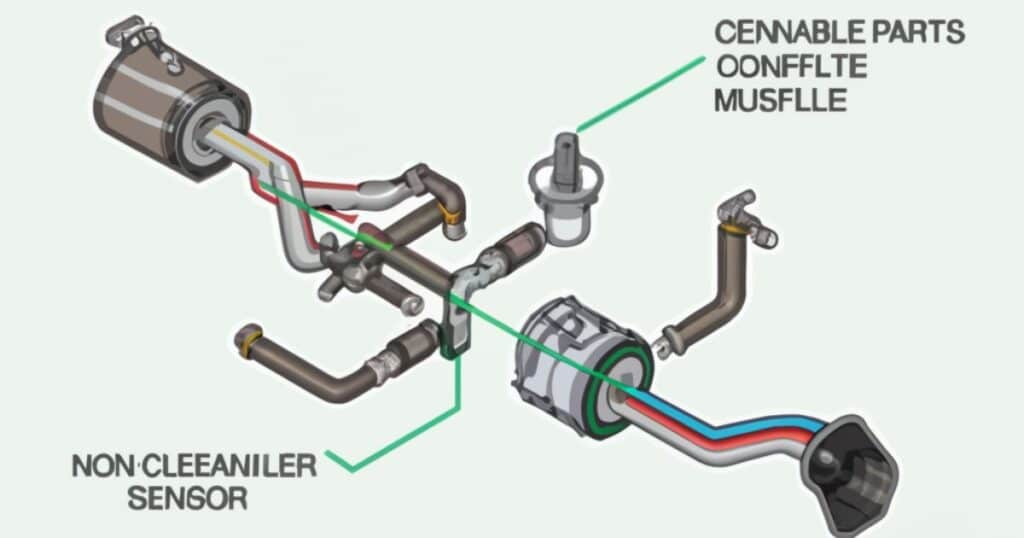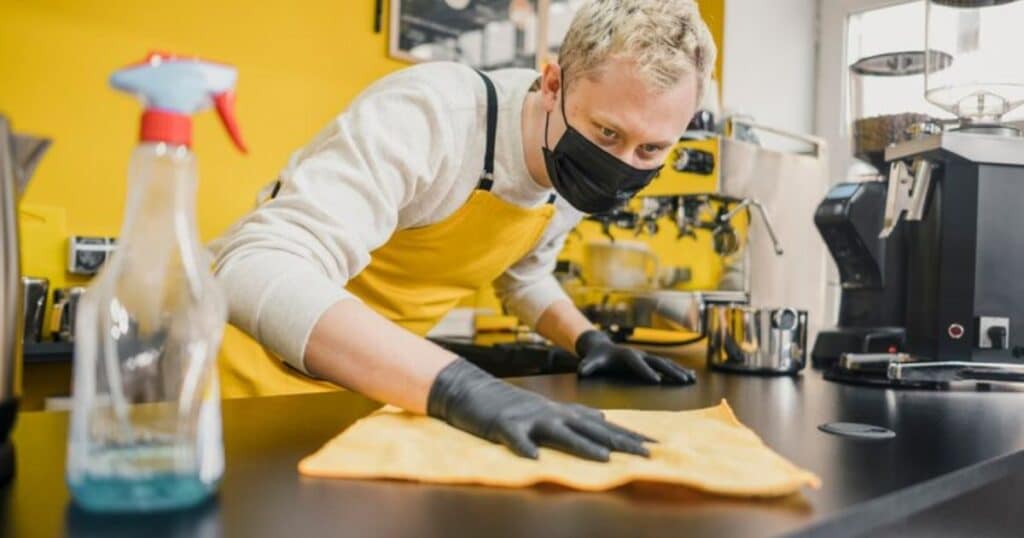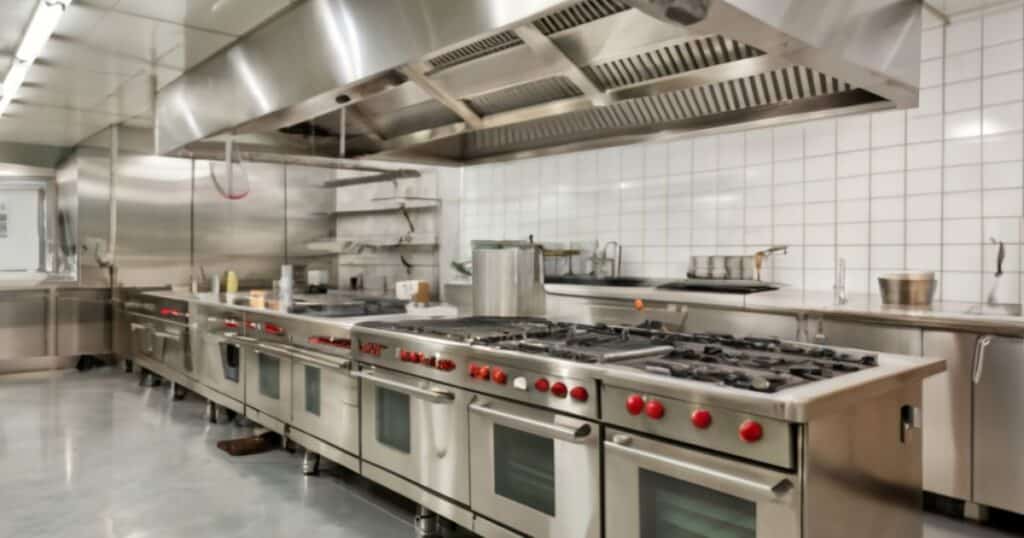Commercial kitchen hoods should be cleaned regularly to remove grease buildup. It’s important to clean them every three to six months. However, kitchens with heavy cooking loads may need cleaning more often. Regular cleaning ensures safety and efficiency in the kitchen.
Wondering how often you should clean your commercial kitchen hood? Keep your kitchen safe and efficient with regular cleaning. Find out the best cleaning schedule for your business today.
When Should You Clean Your Restaurant Exhaust Hood?
Maintaining a clean kitchen hood is crucial for the safety and efficiency of any commercial kitchen. But how often should you clean it? The answer depends on several factors, including the type of cooking you do, the volume of food prepared, and local regulations.
In general, it’s recommended to clean kitchen hoods at least every three to six months. However, kitchens with heavy cooking loads, such as those in busy restaurants or hotels, may require more frequent cleaning, perhaps as often as monthly. On the other hand, smaller establishments with lighter cooking loads may be able to stretch the cleaning intervals to once or twice a year.
Regular inspections can help determine the optimal cleaning schedule for your kitchen hood. Look for signs of grease buildup, such as visible residue on the hood surfaces, excessive smoke during cooking, or unpleasant odors in the kitchen. If you notice any of these indicators, it’s time to schedule a thorough cleaning.
Which Parts of an Exhaust System Require Cleaning?
A comprehensive hood cleaning involves more than just wiping down the visible surfaces. It also includes cleaning the exhaust system, which consists of ductwork, fans, and filters. Neglecting these components can lead to fire hazards, reduced ventilation efficiency, and foul odors.

Here’s a breakdown of the key components that require cleaning:
- Hood Filters: These capture grease and other particles from the cooking process. Over time, they become clogged and less effective, so they should be cleaned or replaced regularly.
- Ductwork: Grease can accumulate inside the ducts, posing a serious fire risk. Professional cleaners use specialized tools and techniques to remove built-up grease from the ductwork.
- Fans and Motors: These components can become coated with grease, impairing their performance. Regular cleaning helps ensure proper ventilation and prevents overheating.
How Does Third-Party Hood Cleaning Work?
Many businesses opt to hire professional hood cleaning services to ensure thorough and safe cleaning. These third-party providers have the expertise and equipment to tackle even the toughest grease buildup.
During a typical hood cleaning service, trained technicians will:
Inspect the System: They’ll assess the condition of your kitchen hood and exhaust system to determine the level of cleaning required.
Protect Surrounding Areas: Before starting the cleaning process, technicians will cover nearby equipment and surfaces to prevent grease from splattering.
Clean Filters and Surfaces: Using specialized degreasers and cleaning agents, they’ll thoroughly clean the hood surfaces, filters, ductwork, fans, and other components.
Inspect for Damage: While cleaning, technicians will also inspect the system for any signs of damage or wear that may require repairs.
Provide Documentation: After completing the cleaning, the service provider will provide documentation certifying that the work was performed according to industry standards and regulations.
Recommended Post: How To Find Happiness As A Stay At Home Mom?
Clean Your Exhaust Hood the Restaurant Technologies Way
Restaurant Technologies offers a comprehensive hood cleaning solution designed to simplify the process and ensure compliance with safety regulations. Our automated hood cleaning system, AutoMist, delivers superior results while minimizing downtime and labor costs.

With AutoMist, cleaning your kitchen hood is as easy as pressing a button. The system automatically dispenses a powerful degreaser onto the hood surfaces, breaking down grease and grime with minimal manual effort. The result is a clean, safe, and compliant kitchen environment.
AutoMist: Automated Hood Cleaning on Your Schedule
One of the key benefits of AutoMist is its flexibility. You can program the system to clean your kitchen hood on a schedule that suits your business needs, whether it’s daily, weekly, or monthly. This ensures that your hood is always clean and ready for action, without disrupting your operations.
In addition to its convenience, AutoMist also offers cost savings. By reducing the need for manual cleaning and minimizing downtime, the system helps lower labor costs and increase productivity. And because it uses less water and chemicals than traditional cleaning methods, it’s also more environmentally friendly.
Tips to Make Your Exhaust Hood Easier to Clean
While regular cleaning is essential, there are steps you can take to make the process easier and more effective:
- Install High-Quality Filters: Invest in durable hood filters that are easy to clean and maintain.
- Schedule Regular Inspections: Conduct routine inspections to catch grease buildup early and address any issues promptly.
- Train Staff Properly: Ensure that your kitchen staff understands the importance of maintaining a clean hood and exhaust system.
- Stay Compliant: Familiarize yourself with local regulations and industry standards for hood cleaning, and make sure your cleaning schedule meets or exceeds these requirements.
Can You Clean Your Restaurant Hood Alone?
While DIY hood cleaning is possible, it’s not recommended for several reasons:
- Safety Concerns: Cleaning kitchen hoods involves working at heights and using potentially hazardous chemicals. Without proper training and equipment, you risk injury or accidents.
- Incomplete Cleaning: Professional cleaners have the tools and expertise to access and clean all parts of the exhaust system thoroughly. DIY attempts may overlook hidden grease buildup, leaving your kitchen vulnerable to fire hazards.
- Regulatory Compliance: Many jurisdictions require commercial kitchen hoods to be cleaned by certified professionals to ensure compliance with safety standards. Attempting DIY cleaning may result in fines or penalties for non-compliance.
Save on Your Insurance Premiums
Maintaining a clean kitchen hood can also lead to cost savings in the form of reduced insurance premiums. Many insurance providers offer discounts to businesses that demonstrate proactive measures to prevent fire hazards, such as regular hood cleaning by certified professionals.
By investing in professional hood cleaning services, you not only protect your business and employees but also potentially save money on insurance costs in the long run.
Read Also This Post: How To Make Oak Kitchen Cabinets Look Modern?
Restaurant Hood Cleaning Checklist
To ensure thorough cleaning and compliance with safety regulations, use this checklist as a guide:
- Inspect Hood and Exhaust System: Check for visible grease buildup and signs of damage or wear.
- Protect Surrounding Areas: Cover nearby equipment and surfaces to prevent grease splatter.
- Remove Hood Filters: Clean or replace filters as needed.
- Clean Hood Surfaces: Use a degreaser and scrubbing brush to remove grease from hood surfaces.
- Clean Ductwork: Use specialized tools to access and clean ductwork thoroughly.
- Clean Fans and Motors: Remove grease buildup from fans and motors to ensure proper ventilation.
- Inspect for Damage: Check for loose or damaged components that may require repairs.
- Document Cleaning: Keep records of cleaning dates and services performed for compliance purposes.
The Benefits of Industrial Kitchen Cleaning

Regular cleaning and maintenance of industrial kitchen equipment offer numerous benefits:
- Fire Prevention: Clean kitchen hoods reduce the risk of grease fires, protecting your business, employees, and customers.
- Improved Air Quality: Proper ventilation ensures a healthy indoor environment by removing smoke, odors, and airborne contaminants.
- Compliance with Regulations: Meeting regulatory standards for kitchen cleanliness helps avoid fines and penalties.
- Extended Equipment Lifespan: Regular maintenance extends the lifespan of kitchen equipment, reducing repair and replacement costs.
- Enhanced Brand Reputation: A clean and hygienic kitchen reflects positively on your brand
and enhances customer confidence.
Why is a Commercial Kitchen Exhaust Hood Necessary?
A commercial kitchen exhaust hood serves several essential functions:
- Grease Removal: The hood captures grease and other airborne particles generated during cooking, preventing them from accumulating on surfaces and equipment.
- Smoke and Odor Control: The exhaust system removes smoke, steam, and cooking odors, maintaining a comfortable and pleasant dining environment.
- Fire Protection: By removing grease-laden vapors, the hood helps prevent grease fires and other kitchen hazards.
- Ventilation: Proper ventilation ensures sufficient airflow in the kitchen, preventing heat buildup and maintaining a safe working environment for kitchen staff.
Why Is It Important to Keep the Exhaust System Clean?
A clean exhaust system is essential for several reasons:
- Fire Safety: Grease buildup in the exhaust system is a significant fire hazard. Regular cleaning reduces the risk of grease fires and protects your business and employees.
- Efficiency: Clean exhaust systems operate more efficiently, providing better ventilation and reducing energy consumption.
- Air Quality: A clean exhaust system helps maintain a healthy indoor environment by removing smoke, odors, and airborne contaminants.
- Regulatory Compliance: Many jurisdictions require commercial kitchens to maintain clean exhaust systems to comply with fire safety and health regulations.
- Cost Savings: By preventing grease buildup and maintaining proper ventilation, regular cleaning helps avoid costly repairs, downtime, and fines for non-compliance.
How Do You Clean a Commercial Exhaust Hood?
Cleaning a commercial exhaust hood requires careful planning and the right tools and techniques.
Here’s a step-by-step guide:
- Preparation: Turn off cooking equipment and cover nearby surfaces to protect them from grease splatter.
- Remove Filters: Take out hood filters and soak them in a degreaser solution to loosen grease buildup.
- Clean Hood Surfaces: Use a degreaser and scrubbing brush to clean the hood interior and exterior thoroughly.
- Clean Ductwork: Use specialized tools, such as rotating brushes or pressure washers, to clean grease buildup from ductwork.
- Clean Fans and Motors: Remove grease buildup from fans and motors using a degreaser and scrubbing brush.
- Inspect for Damage: Check for loose or damaged components that may require repairs or replacement.
- Document Cleaning: Keep records of cleaning dates, services performed, and any issues identified for compliance and maintenance purposes.
- Schedule Regular Maintenance: Establish a cleaning schedule and stick to it to ensure ongoing compliance and safety.
Frequently Asked Questions
How often should kitchen hoods be thoroughly cleaned by a professional?
Kitchen hoods should be cleaned by a professional every three to six months.
What is the NFPA standard for hood cleaning?
The NFPA standard for hood cleaning recommends cleaning every three to six months to prevent fire hazards.
How often do you need to clean the range hood?
It’s best to clean the range hood every three to six months to keep it working well.
How do you clean commercial restaurant hoods?
Commercial restaurant hoods are cleaned using degreasers and scrubbing brushes to remove grease buildup.
How long do commercial kitchen hoods last?
Commercial kitchen hoods can last for many years with proper maintenance, typically around 10 to 15 years.
How long does it take to clean a commercial kitchen hood?
Cleaning a commercial kitchen hood usually takes a few hours, depending on its size and level of buildup.
Conclusion
Regular cleaning of commercial kitchen hoods is crucial for safety and efficiency. By cleaning hoods every three to six months, businesses can prevent grease buildup and reduce the risk of fire hazards. Following a consistent cleaning schedule helps maintain a clean and healthy kitchen environment for staff and customers alike.
Adhering to cleaning guidelines ensures compliance with industry standards and regulations, such as those set by the NFPA. Keeping kitchen hoods clean not only protects the business from fines and penalties but also promotes a positive brand image and customer confidence. Investing in professional cleaning services or automated cleaning systems like AutoMist can streamline the process and ensure thorough cleaning on a regular basis.
Overall, prioritizing regular maintenance and cleaning of commercial kitchen hoods is essential for the long-term success and safety of any food service establishment. By staying proactive and following best practices, businesses can create a clean, safe, and efficient kitchen environment for their employees and patrons.

Warner Clips is an expert writer with 4 years of experience crafting engaging content on Home topics. My expertise ranges from creating cozy environments to tackling Home Improvement projects. Find my work in publications like Huffington Post and Reader’s Digest.







